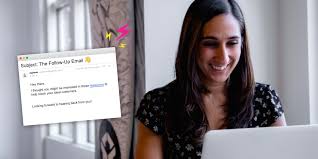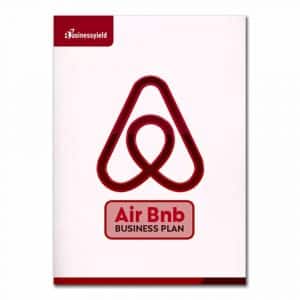A follow up email can assist you resume your conversation if your email has ever been ignored. But it can be challenging to know how to proceed with a follow-up email if you don’t get one. There’s a reason you’re following up on something, so you don’t want to seem pushy (people get busy occasionally, and we all forget things). Don’t worry if you’re having trouble coming up with a respectful and professional reminder to react. In this comprehensive guide, we go into great detail on how to draft a follow up email after interview and receiving nothing in return and also offer some useful examples.
Follow Up Email
A follow up email is one you send to a person you’ve already spoken to via email. There are several reasons for you to consider sending a follow up email, including:
- Remind the recipient of an email you’ve already sent.
- Inquire about something or get a response.
- When applying for a job or following the delivery of your resume, remind the recipient of an important time or date (for an event, for instance).
- A follow-up email’s function is to serve as a reminder or prompt for an earlier email you’ve sent. It is intended to reenergize a conversation and elicit a response rather than to start one.
The most effective follow up emails are condensed, succinct, formal, and most crucially direct. Don’t waste words or time; tell the experts: Researchers from the US team examined more than 2 billion emails and discovered that users frequently scan lengthy emails. Researchers in the study determined the primary causes of email disregard:
- The duration or effort put forth in responding to the email
- User workload and context, sender identification, and the number of recipients in a thread
- The email message’s urgency
How to Send a Follow up Email
Pay close attention to the email format when you create a follow up email, particularly the beginning and end. Let the recipient know what you need them to accomplish, get right to the point, and make it short and simple. For a good follow up email, use the following steps:
#1. Decide On The Goal Of Your Follow-Up Email And Let Your Prospect Know It
If you are unsure of what you want to say in your email, don’t send it! Plan ahead for the goals you want to accomplish with each individual follow-up email. Whatever your objective, be sure to make it known in the email and properly convey it. Try to be as clear as you can; this will show potential customers that you aren’t wasting their time, and they’ll understand why you want their attention, increasing your chances of getting the information or reaction you need from them.
For instance,
- “First_Name,” if you’re keen on my suggestion, I’d be happy to show you how to make the most of our product. Visit this page to schedule a free demo.
- Recently, “Your Organization’s Name” released “Product Name,” and how you see “how it will impact them” may be greatly affected.
- You might be able to [raise your sales this quarter by 10%] with the aid of ! Would you be willing to give it a free trial? That was my question.
#2. Check Your First Email’s Subject Line Is Catchy A follow up Email’s Subject Line
The subject line of your email should be given greater weight than the email’s body text. After all, the subject line is among the first things your prospect looks at.
Avoid using words that may cause the spam filter to go off, sending your emails to the spam or garbage folder. When composing subject lines, keep these three guidelines in mind:
- Wherever you can, be unique!
- Make it brief and direct.
- Add interesting questions.
- Keep your subject line’s length optimized at 9 words and 60 characters, particularly for mobile readers.
- Carry out A/B testing
#3. How to Write an Introductory Line for a Follow-Up Email to a Client: Give the prospect context.
In case you forgot, business professionals send and receive 121 emails per day on average. As a result, email recipients are unlikely to recognize you, so it’s critical to include a personal connection, distinctive identification, or shared interest that will give them context and make you easier to recall.
You must be sure to spark their memory with your opening sentence, possibly by calling their attention to your earlier email. They’re more inclined to reply to someone they’ve spoken to before, even if they can’t recall you.
You can use the email openers listed below to introduce yourself and provide your recipient with some background information:
- Greetings, First Name> You had read my prior email, I noticed. I simply had a question.
- To follow up on the email I sent a few days ago, I am writing to you.
- First Name, I just wanted to send you a quick follow-up to see what you thought of the email’s topic.
- Could you look over my previous email, please?
- Although I am aware that you are probably busy right now, I thought you might find this useful.
- I haven’t heard back from you, “First Name,” but I’m confident that “topic of email” will provide the outcomes you’re after.
#4. Increase Your Value
You recognize the value of valuable content because you receive emails. Also, you will probably decide not to respond to an email if it doesn’t add anything to your life. You can add value to your prospect in the following ways:
- Share client endorsements or testimonials (preferably from someone in the same field or business as them).
- Solutions to certain problems
- A blog post
- Social evidence
- E-books
- Instructions or videos
- Instance studies
- Webinar
- Attractive deals and discounts
- Longer trial period without charge.
It should be relevant to them and seen as a benefit by them in whatever form you choose to add value. Your prospects must be motivated to respond in order for you to start a conversation with them.
#5. Include a Call to Action.
Your email ought to be actionable or simple to respond to. How precisely do you go about doing that? You include a strong Call-To-Action (CTA). Under no circumstances should you ignore your CTAs. To create a compelling CTA, use these basic tips:
- Do not make a “big ask” too early in the follow-up cycle. Prioritize developing trust. Before potential customers agree to a deal, give them a chance to learn more about you. Begin by making simple requests, such as asking for a quick meeting or exchanging resources.
- Don’t allow any opportunity for uncertainty; be as unambiguous as possible. Don’t sound ambiguous, and be specific about the actions you want your prospect to take after reading this.
- Don’t ask for too much or go overboard. Your potential customer does not wish to be burdened. Instead, make your CTA (the request) clear and straightforward so that the prospect can swiftly assess or answer. Simply respond “yes” if you are interested in learning more about something, and I will then provide you with more details.
#6. Make Your Follow-Up Sequence Automated
It will be difficult to manually send out follow-up emails. especially if you have to keep track of each one individually to determine which prospect is genuinely worth concentrating on. Use a cold email automation tool instead, which enables you to design automated follow-up cycles with different settings.
Follow Up Email After Interview
If a job interview goes well, you’ll want an update on the recruiting process. However, sending a post-interview follow-up email has several pitfalls.
You may lose the job if you appear pushy, sloppy, or too casual. How to write an intriguing follow-up email after an interview
#1. Time Your follow up Email.
The first step to follow up email after interview is to let the dust settle. Your interviewer may be talking to other candidates, so calling them on the day won’t help. Send that crucial follow-up after a few days.
#2. Vocal Tone
Keep your follow-up professional and polite, no matter the interview. Self-deprecation isn’t appropriate now. Clarify your message’s intent. If you’re searching for a recruitment update, don’t waste time with small talk.
Follow-up Email content
Sending follow-up emails requires discipline. Follow this guide for a short, professional message with the best response rate.
#1. Subject Line
Spending hours on a catchy subject line is unnecessary. Responding to the most recent email from the interviewer or HR manager is the best way to get your message opened immediately.
If this isn’t possible, just provide your name, the interview date, and the time.
Use this template:
John Smith: Tuesday, 4 p.m. interview
#2. Introduction
If you’ve exchanged multiple emails and spoken face-to-face with the person you’re contacting, you can start your follow-up email with their first name. If not, use Mr./Ms. Jones.
#3. Body Text
Stay simple. Before opening your email, the interviewer will know you’re updating them on progress. Politely direct:
- Thank them for interviewing.
- Specify the job title and interview date when following up on your interview.
- Remind yourself of your interest and ask about what’s next.
- Request a status update, stating that any information would be appreciated.
- Signing off
Invite your interviewer to ask questions after you make your point in your follow-up email. End with “looking forward to hearing from you,” “thank you,” and your entire name.
#4. Last Checks
Before sending, proofread your follow-up email. Space, punctuate, and proofread it. Spellchecking should help.
How Long Should You Wait After an Interview to Follow Up?
Usually, it’s advisable to give interviewers at least five business days to get in touch with you. That implies that if you interview on a Thursday, you should wait until the following Thursday to contact them. If the hiring organization does respond, this could indicate that you have to wait a week or longer.
How Do You Politely Ask an Interview Result?
Dear [Name of the Hiring Manager], I hope everything is good. I was simply checking in to see if there had been any updates regarding the timeframe or status of the position with the [title of the job] I interviewed for on [interview date]. I’m still really curious and am eager to hear from you.
Best,
Your name
How Do You Politely Follow Up on a Job Offer?
Steps on how to politely follow up on an ignored job offer
- Start by extending a courteous hello. It can be helpful to begin with a cordial greeting to the reader because you’re answering in a professional context.
- Thank you for the opportunity to speak with you.
- Inquire about a timetable or gently decline the offer.
- Confirm your next actions.
- Please say “thank you” again.
How Do You Ask if You Are Still Being Considered for a Job?
Dear [Name of the Hiring Manager],
I hope everything is good. I’ve received an offer from another organization, so I wanted to find out how the [job title] position is doing. I’m still really interested in joining the staff at [business name] and wanted to learn more about the status of my application and the timetable before making a choice. If you have a moment, just let me know.
Thanks!
Your name
What to Do if No Response After Interview?
If you receive no response, you can email for a second interview. To keep the conversation going, seek out constructive criticism. In this manner, if you don’t acquire the job, you might discover more about why. The most crucial thing to keep in mind is to always be respectful and proactive rather than the opposite.
How Do You Follow Up After an Interview Without Response?
Here’s how to send a follow up email to find out how things went following your interview:
- Verify that you have permission to connect.
- Create a subject line that is appropriate.
- Observe proper email etiquette.
- Let’s start with some background information.
- Pose a query.
- Demonstrate your curiosity.
- Proofread one again.
Related Articles
- HOW TO ASK FOR A RAISE VIA EMAIL: [Free Tips] Guide & Template.
- HOW TO FIRE SOMEONE: Best Tips on How to Fire an Employee and What Not to Say
- EMAIL MANAGEMENT: Meaning, Software, Strategies & Skills
- TELEPHONY: Meaning, App, Video & Tips to Know







